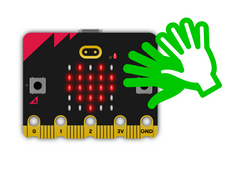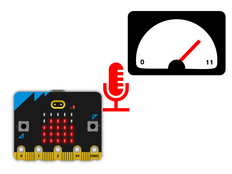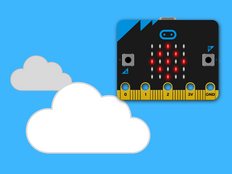Step 1: Make it
What is it?
Make your own disco light show with the new micro:bit! The LED lights pulse in time to music picked up by the built-in microphone. The louder the sounds, the brighter they glow.
Introduction
Coding guide
What you'll learn
- How to use the new micro:bit's built-in microphone sensor to measure how loud a sound is
- How to vary the brightness of the LED display output in response to sensor input readings
How it works
- The microphone measures loudness of the sounds it picks up as numbers from 0-255. 0 is the quietest sound, 255 is the loudest.
- All the LEDs on the display are switched on when the program starts.
- The brightness of the LEDs can also be set using numbers from 0-255. 0 is the darkest (off) and 255 is the brightest.
- A loop constantly sets the brightness of LEDs to match the amount of sound picked up by the microphone sensor.
- The louder the sound, the brighter it makes the LEDs shine.
- Flash this program on to a new micro:bit with sound, play some music with a strong beat and watch the lights pulse in time to the music!
What you need
- new micro:bit with sound (or MakeCode simulator)
- MakeCode or Python editor
- battery pack (optional)
Step 2: Code it
Step 3: Improve it
- Modify the program to use your own images or patterns
- If you're in a class or group, flash the program on to multiple micro:bits, dim the lights, play some music and have a light show!
- Can you make the lights get darker with louder sounds?
This content is published under a Creative Commons Attribution-ShareAlike 4.0 International (CC BY-SA 4.0) licence.


